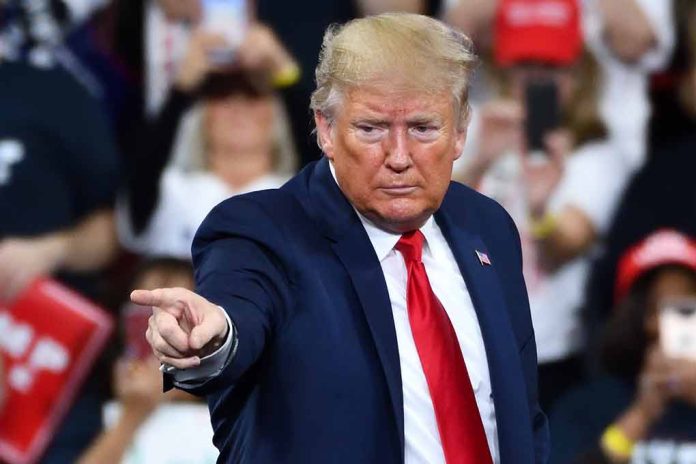
Donald Trump’s response to Pete Hegseth’s alleged Signal chat controversy sparks deeper discussions on media sensationalism and public discourse.
Key Takeaways
- President Trump supports Pete Hegseth amid Signal chat allegations.
- The controversy involves claims of media sensationalism and unreliable sources.
- Critics argue leaked information may have originated from disgruntled former employees.
- Assertions of internal Pentagon disarray surface alongside the chat leak controversy.
Media Sensationalism and Allegations
Donald Trump has publicly backed Secretary of Defense Pete Hegseth in light of alleged misuse of the Signal app for internal communications. The controversy, primarily scrutinized by The New York Times, suggests Hegseth shared strategic military details and included non-Pentagon personnel in private discussions. Discussions have centered on whether these reports reflect typical media sensationalism, with Trump himself dismissing the criticisms as “a waste of time”.
Key figures in the story question the validity of reports, noting that the claims primarily stem from unidentified sources. Some involved, like Chief Pentagon Spokesman Sean Parnell, have sternly warned against taking these narratives at face value, particularly when rooted in disgruntled former employee accounts. Trump’s stance highlights a broader skepticism of media practices in reporting sensitive issues.
In addition to blaming the press and former employees for the latest Signal controversy, Hegseth said he has spoken to Trump.
“We are going to continue fighting. On the same page all the way,” he says. https://t.co/xQcABHe1rK
— Connor O'Brien (@connorobrienNH) April 21, 2025
Leadership and Internal Dynamics
The situation at the Pentagon under Hegseth’s leadership draws critical attention. The decision to fire former advisers Dan Caldwell and Darin Selnick for allegedly leaking information has caused further intrigue. John Ullyot, a former Pentagon spokesperson, described the Pentagon as being in disarray under Hegseth’s command. Critics raise concerns over operational coherence amidst these leaks, underscoring potential vulnerabilities in internal communication strategies.
Hegseth himself has criticized the focus on the chat as fabricated media attacks, suggesting that former employee accounts aren’t credible. He argues this scenario is yet another example of the media’s role in framing contentious narratives to the public, diverting attention from substantive Pentagon achievements.
Trump’s Support and Broader Implications
Trump’s unwavering support is evident through his rhetoric and actions. White House Press Secretary Karoline Leavitt reiterated Trump’s confidence in Hegseth, acknowledging his leadership against the Houthis in Yemen, which she described as phenomenal. Lessons in the management of both intra-administrative conflicts and public information release have marked this incident, offering insights into ongoing efforts to ensure transparency and accountability.
This unfolding scenario between media, military, and governance sheds light on deeper layers of communication ethics in an era dominated by digital interactions. It calls into question the reliability of narratives constructed from leaks, particularly when privacy tools like Signal enter the frame, thus affecting perceptions and trust.
Sources:
Trump ‘stands strongly behind’ Hegseth after new Signal report: White House
Trump Makes Critical Decision After Hegseth Allegedly Caught in Second Signal Chat Disaster
Trump Calls Concern Over Hegseth’s 2nd Signal Chat Episode ‘Waste of Time’







